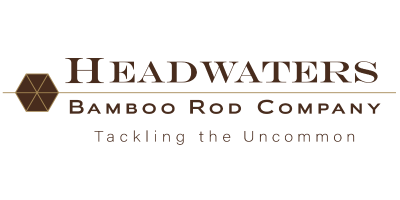End-of-year appreciation. 35% automatically applied at checkout for all Deluxe Series Bamboo Fly Rods through January 2, 2026.
Menu
-
-
Fly Rods
- Deluxe Series Bamboo Fly Rod Collection (2-tip rods)
- Favorite Series Bamboo Fly Rod Collection (1-tip rods)
- The Kit: Deluxe Series Bamboo Fly Rod Outfits
- The Grande Ronde 6' 6" 3-wt
- The Beaverhead 7' 0" 4-wt
- The Gallatin 7' 6" 4-wt
- The Henrys Fork 7' 9" 5-wt
- The Deschutes 8' 0" 6-wt
- The McKenzie 8' 6" 5-wt
- Extra Bamboo Tip Section
- FlexGlass Fiberglass Fly Rod Collection
-
Other Classic Gear
- Flylife Gear
-
- 1.208.789.4391
- Login
-
USD

End-of-year appreciation. 35% automatically applied at checkout for all Deluxe Series Bamboo Fly Rods through January 2, 2026.

Conservation Matters: How Anglers Can Protect the Streams We Love
2 min read
Conservation Matters: How Anglers Can Protect the Streams We Love
Every angler has a favorite piece of water. A quiet bend, a spring creek, a stretch of riffle that feels like home.
But these places don’t protect themselves. Healthy streams depend on healthy habits and as anglers, we have a real role to play.
Here’s how you can fish responsibly, leave less impact, and ensure that the waters we love stay healthy for generations to come.
1. Wade Carefully
Every step you take in a river moves sediment, disturbs habitat, and can crush fragile aquatic life. Good wading is more than balance, it’s awareness.
Simple steps:
-
Enter and exit the water at durable, established points.
-
Walk on gravel bars when possible, not through spawning beds.
-
Move slowly to minimize stirring up sediment.
A good rule? If the trout seem nervous before you even cast, you’re moving too fast.
2. Practice Smart Catch-and-Release
Catch-and-release works, but only if it’s done carefully.
Key tips:
-
Fish barbless when possible.
-
Keep fish wet and minimize handling.
-
Use rubber nets and wet your hands before touching a trout.
-
Fight fish efficiently to reduce exhaustion, especially in warm water.
If you’re fishing on a hot day and the water is over 68°F, it’s better to call it early than risk harming the fish.
3. Respect the Banks and Riparian Zones
The stream isn’t just the water. The plants, roots, and soil along the bank are vital to the entire ecosystem.
Good habits:
-
Stay on established trails when possible.
-
Avoid trampling streamside vegetation, especially in fragile alpine or desert streams.
-
Pack out all your trash and any you find.
A healthy riparian zone means better insect life, cooler water temperatures, and better trout habitat.
4. Mind Your Gear and Waste
Fly anglers are often surrounded by small, easy-to-lose pieces of gear: tippet scraps, old leaders, split shot.
Regular routines:
-
Carry a small trash container for line and scraps.
-
Never leave monofilament or wire behind; it lasts for decades in the environment.
-
Choose recycled gear made with sustainability in mind.
Small efforts add up to big differences.
5. Share the Stream and the Stewardship
The rivers aren’t just ours. They belong to every future angler, every fish, every heron, every stonefly hatch.
Best practices:
-
Teach new anglers good habits.
-
Support conservation organizations and habitat restoration projects.
-
Volunteer for stream cleanups.
The best ambassadors for fly fishing are the ones who leave a river better than they found it.
The Connection Runs Deeper Than the Cast
Every cast we make is a small investment in the river’s future. The more we wade carefully, release fish thoughtfully, respect the banks, and share a culture of stewardship, the more the streams give back: in trout, in memories, and in a fishing life that’s richer and deeper than numbers in a net.
Because the real trophy isn’t the biggest fish — it’s the places we keep wild.
Leave a comment
Comments will be approved before showing up.
Subscribe
Sign up to get the latest on sales, new releases and more …
